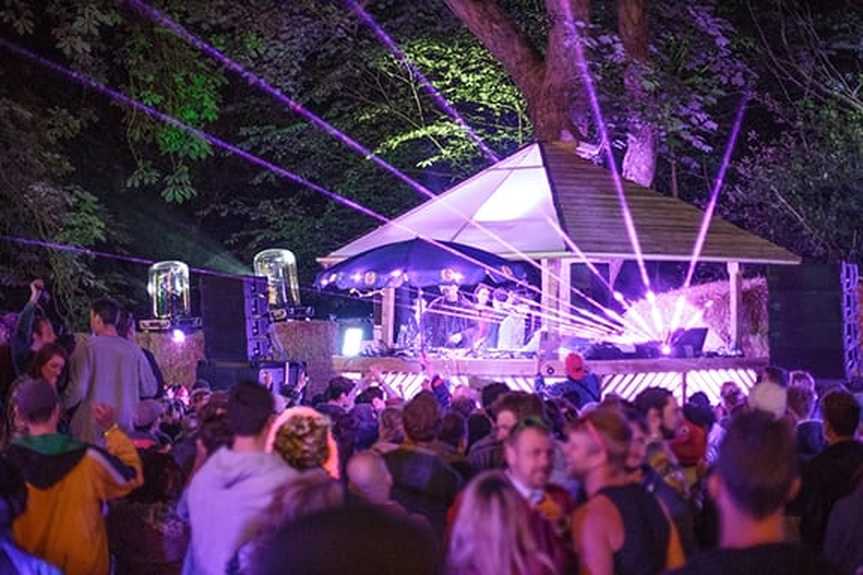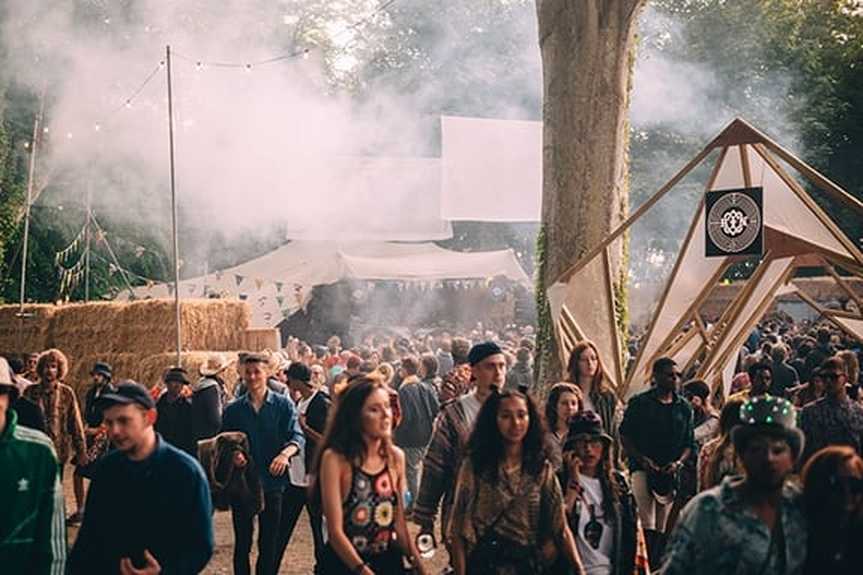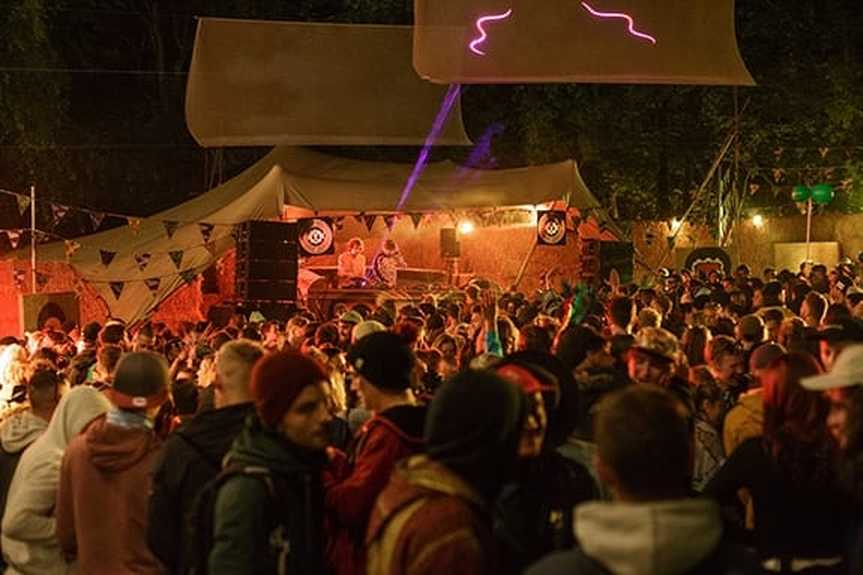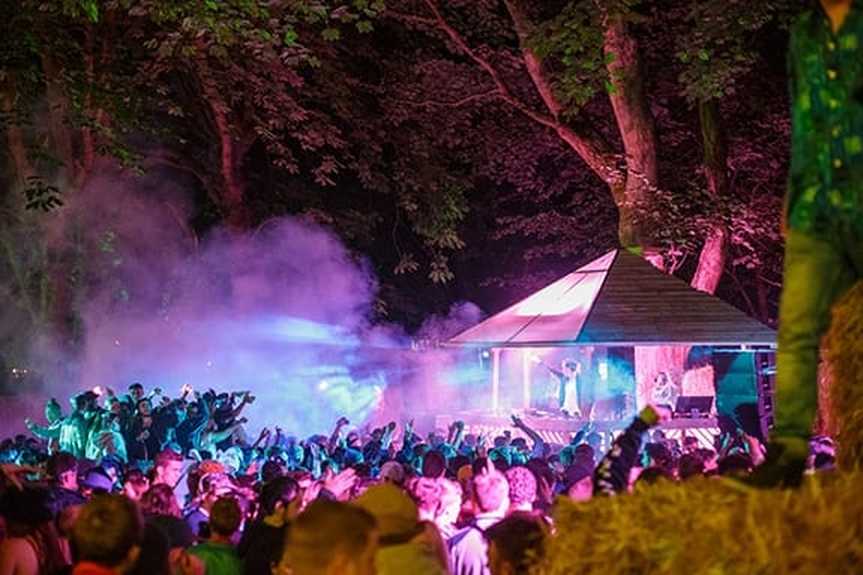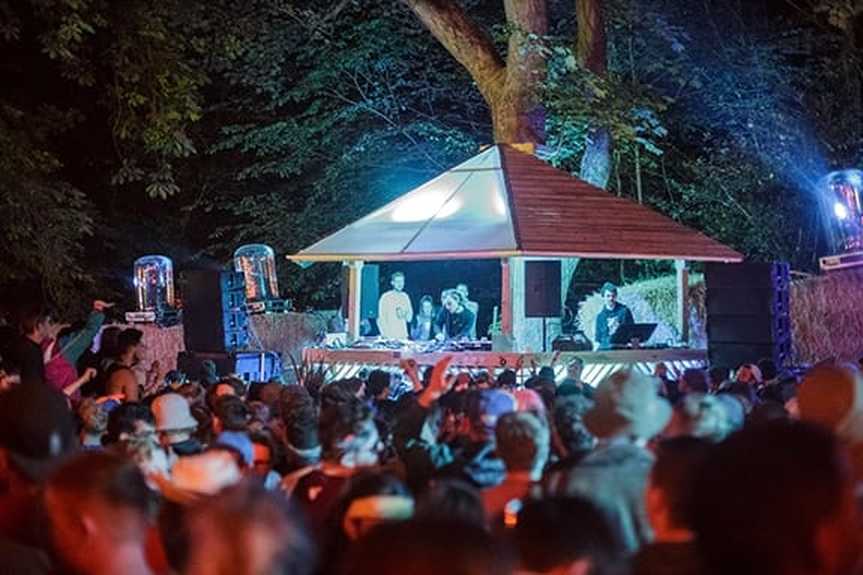INTO THE WOODS - BY SIMON HONYWILL
Into The Woods - By Simon Honywill
Does a sound system in the woods make a noise if nobody is there to hear it? The answer is a resounding yes, especially when it's VME's MLA Compact at Gottwood Festival on the beautiful isle of Anglesey. And if this is so, does it make a noise outside the woods? The answer is a resounding no, and here's why.
Anglesey, if you've never been there, is very far away. What was one of the furthest outposts of the Roman Empire, it was deemed so important they made the A5 go all the way there, in a desperate attempt to try and bring it closer. They failed. The only people who have the means of getting there quickly are the RAF, who has a base there from which they fly all manner of amazing hardware, much to my excitement.
Gottwood Festival is a relatively young event, in both senses of the word. Its building blocks are youth, electronic dance music, and a beautiful location in which to throw yourself to the mercy of a raft of DJ's and whatever else you fancy. I think cider is quite important here. So, what was a grizzled, plane-spotting child of the prog-rock generation doing at such a very 'un-me' event?
I was visiting Gottwood with a view to helping out MLA partner VME, who hold the contract for all things technical on this very rural site. It's a challenging job by any stretch, but in the very capable and committed hands of Production Manager Ben Hyman it was well catered for, with enough twinkling lights to create a beautiful atmosphere and sound systems everywhere.
Amongst the many stages tucked away in the woods surrounding the central lake were four small arenas that formed the venues for the headline acts. I've always quite liked the concept of being a superstar DJ – I imagine it to be very similar to when I used to drag a massive box of records round to a mates place and insist on dominating what would now be called the 'playlist'. Difference is these days people don't like dancing to 9/8 time and they get paid for it. How cool is that?
The point is, however, that these four stages all featured stereo MLA Compact systems, stacked four high on two MLX subs, in a variety of environments. One was in a walled garden where not much gardening had been done for a while, another, the Trawler Stage was next to the lake and featured a broken fishing boat as the DJ riser, the Forest Stage was unsurprisingly in the trees surrounded by hay bales and the Lost City was in the open again, delineated by a fairly impressive hay bale henge.
It was of course the wish of the organisers that these stages should be as massively loud as possible. It was of course the wish of the local environmental health officers that it should be all but inaudible at the nearest houses, some seven or eight hundred metres away. It was my job to help make this happen, but with an ambient noise level in the very low thirties at these houses, mostly the result of bleating sheep and the occasional jet fighter, this was going to be a challenge. As anybody who properly understands the acoustics of line-arrays will tell you, the length of the line dictates the lowest frequency at which an array demonstrates line-source characteristics. Many things have been said about the unique abilities of MLA systems, but defying the laws of physics is not something that is quoted in the brochure. These arrays were four cabinets deep - my hopes were not high.
Talking to Ben Hyman about his previous experiences here since the festival began, I was surprised to learn that the content of the offsite noise was mostly mid-range, not as you would tend to expect, thumping low end. On hearing the festival from the measuring point, he was not wrong, with a band ranging from around 800Hz to 1.5KHz being the most audible. I have learnt from previous experience that it is possible to do some fairy extraordinary things with MLA systems, so I needed to find a way of maintaining the integrity of the system's acoustic performance, contain the sound to avoid smothering other stages and most importantly not upset the neighbours.
The low frequency containment would seem to have been down to a combination of the directivity of the awesome MLX subs, but helped in no small way by the efficacy of hay bales as low frequency absorbers. I think they should be compulsory at every rural festival – they look right as well as working as acoustic barriers…
I took the approach of placing a hard avoid 'lid' on each system and ignoring the non-audience parameter when it came to optimisation. I reckoned the hay bales would do the majority of that work for me. This seemed to maintain the frequency response well and dramatically reduce the ubiquitous 'aliases' that lobe upwards from any line array system, in this case at around 900 Hz. This was looking promising! It took some time to get all four systems up and running, but once achieved it was time to start walking and checking the performance as presented in the software. If I had any concerns about compromising the frequency response my fears were instantly allayed – the systems sounded fantastic. There was no doubt that from stage to stage, the amount of spill was more than acceptable, particularly at the lake, where the system fired directly across the water at the main chill-out zone on the lawn in front of the house.
Armed with meters and a massive, VME branded Land-Rover, Ben and I set off into the line of fire to visit the neighbours in what must be the most beautifully sited council estate in all of Britain. The back gardens had sweeping vistas of the Irish Sea, framed at each end by gnarly outcrops, and in-between was the Gottwood estate, concealed in the bottom of a heavily wooded valley.
We settled down to listen and measure, a task made all the more easy by the incredibly effective radio comms installed for the job. With the wind carrying sound in our direction, we had each of the major systems, including some non-MLA, switched on to level in turn to assess which would be contributing the most to any offsite noise. The licence for the festival determined that all the different stages were limited to 95dBA at maximum onsite. I was amazed at the effect of switching the hard avoid on the Forest Stage in and out. At 800 metres away, it made a distinct difference, shifting the frequency content noticeably such that the overall contribution was lessened by around 3dB, a significant amount when you are dealing with environmental noise restrictions. The Trawler Stage by the lake was inaudible offsite. All of this was from 4 cabinet deep sources. With all systems on the entire site playing to level, we measured around 44 – 45dBA offsite – a right result if I may say so.
I left the festival to enjoy itself, but left being once again surprised by the abilities of MLA systems to solve problems where others create them, a truly valuable asset for any company working events where noise restrictions can be a problem.
As I drove away from Gottwood, heading towards the misty mountains of Snowdonia and the prospect of Glastonbury fast approaching, I felt entirely buoyed by the whole experience. I heard the sound of jet engines overhead, slowed and looked skywards into clear blue. Not one, but nine bright red Hawks flew right over the car – the Red Arrows. There was a heavy roar, and they pulled up in formation into a huge loop, smoke on, and then screamed earthwards to burst away in all directions, seemingly for no other reason other than showing off. I pretended it was just for my benefit. Keep it up lads, I thought – the more of that there is, the less the residents will be worrying about festival noise.
